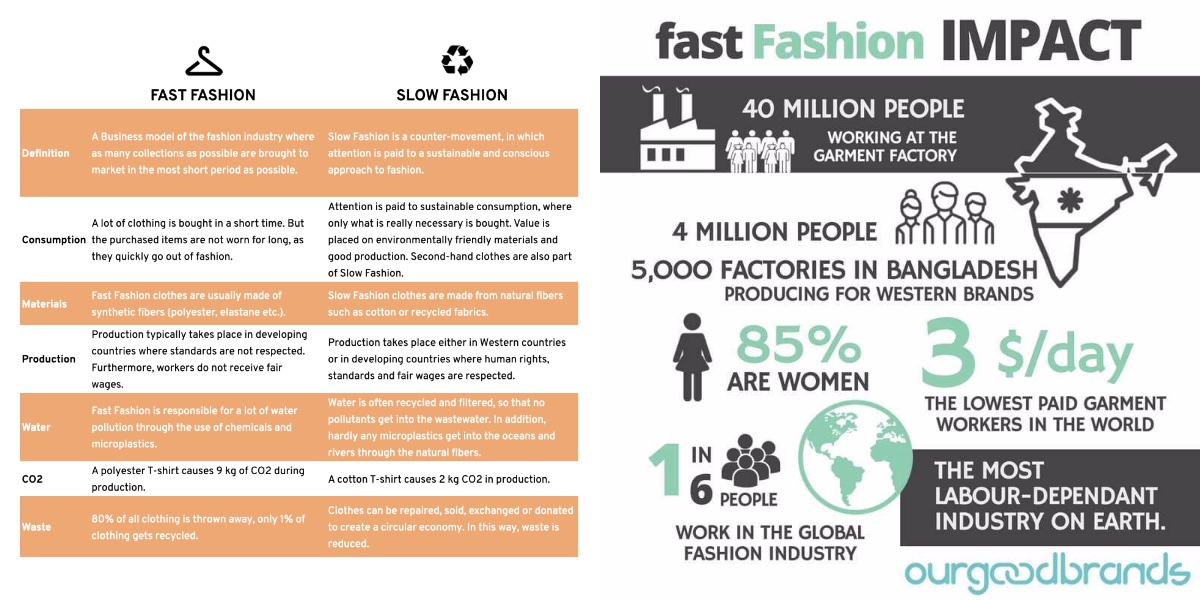
What is “Slow Fashion?”
Slow fashion is essentially the opposite of “fast fashion,” which exploits workers and pollutes the ecosystem at alarming rates, slow fashion advocates for manufacturing regarding people, the environment, and animals. Contrary to industrial fashion practices, slow fashion involves local makers and sources of eco-friendly materials to preserve crafts and the environment and ultimately provide value to consumers and producers. It flips this model on its head with slower production schedules, small-batch collections, and zero waste designs.
“The textile industry produces more CO2 emissions annually than the shipping and aviation industries combined.” – Charolette Beauchamp, Shorthand Stories
Check out more alarming statistics and information about the harmful environmental effects of “fast fashion” on Shorthand

So how can consumers tell the difference?
Often, “fast fashion” is created using cheap fabrics such as polyester and nylon and is typically made in bulk using inexpensive sweatshop industries throughout Asia. Fast fashion brands include Fashion Nova, Forever 21, Zara, H&M etc. While “slow fashion” uses natural materials grown sustainably. This allows for clothing to be produced in a more natural environment. Typically “slow fashion” materials include linen, organic cotton, or Tencel to create longer-lasting clothing. Brands often have a sustainability report located on their website.
(Some) “Slow Fashion” brands include: Reformation, Grammar NYC, Eileen Fisher, Quince, Patagonia, Amour Vert, House of Sunny, Stella McCartney, Dora Larsen, Connor Ives,
Who started the “Slow Fashion” movement?
1970: Ethical fashion was first introduced into mainstream culture by hippies, who preferred locally-grown, handmade, and pesticide-free products.
1990: The New York Times and Vogue published articles tracing the environmental trend in the fashion world. Soon after, British fashion designer Katharine Hamnett, who has been recognized as one of the first designers to combine environmental activism with fashion, gave a speech about the environmental impacts of fashion at the UN.
1995: Giorgio Armani began to use hemp in his Emporio Armani collection.
2001: Natalie Chanin launched Project Alabama, a collection of 200 locally produced hand-sewn T-shirts. Stella McCartney launched her sustainable line the same year.
2007: The term “slow fashion” was coined by Kate Fletcher, a professor of Sustainability, Design, and Fashion at the University of the Arts London’s Centre for Sustainable Fashion.
2011: The UN formed the Alliance for Sustainable Fashion, an organization designed to stop the fashion industry’s environmental and socially destructive practices.
Fair Trade USA rolled out the first sustainable fashion certification label.


